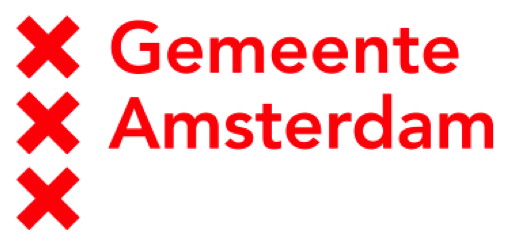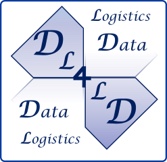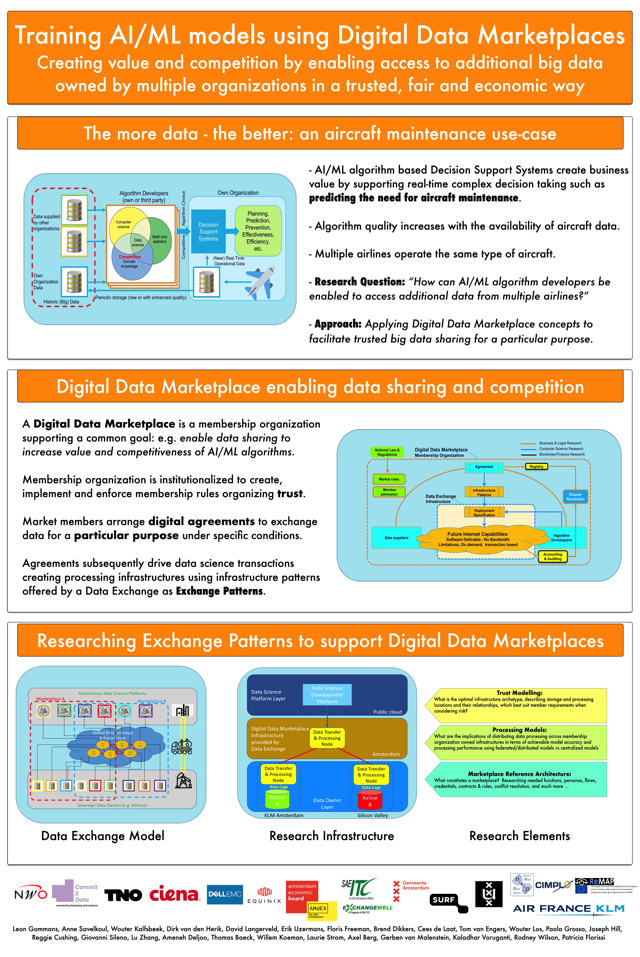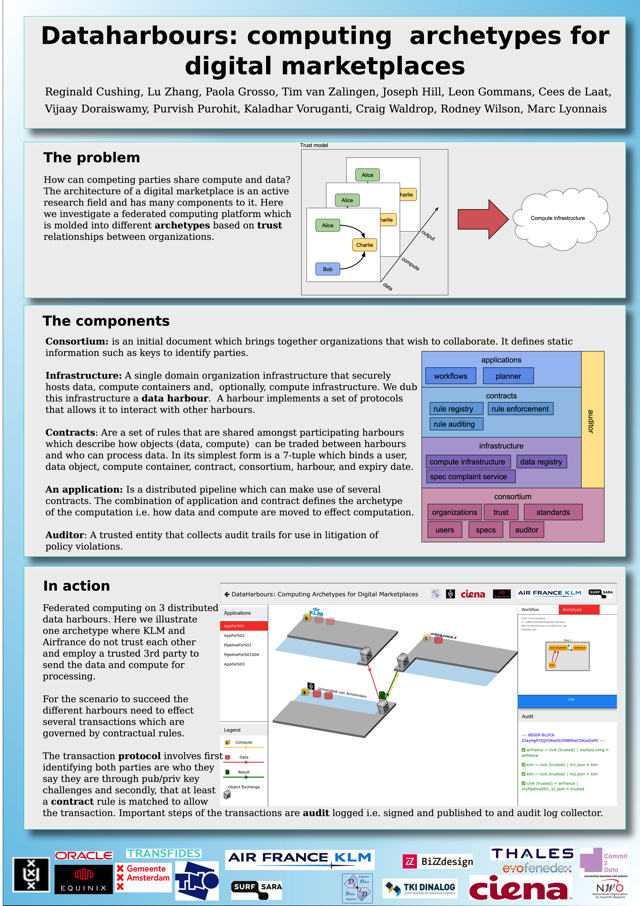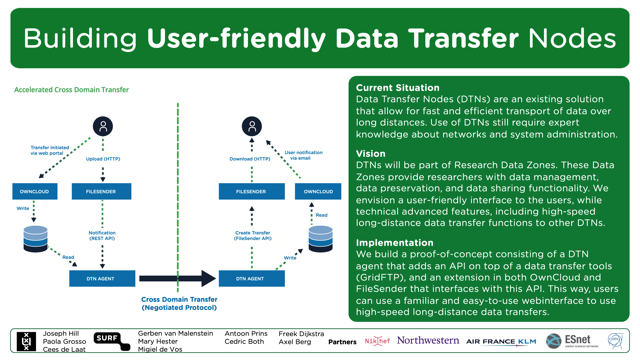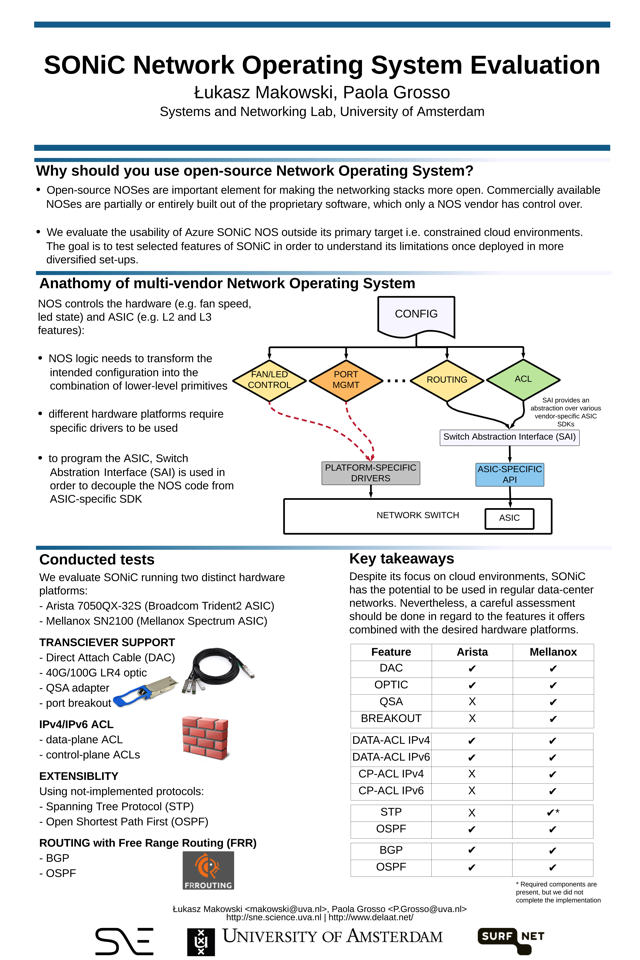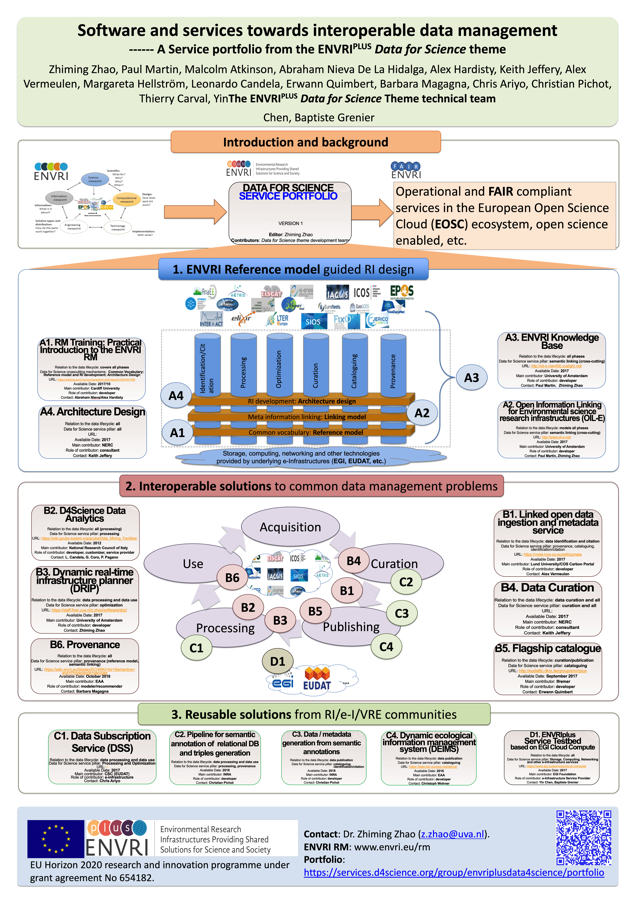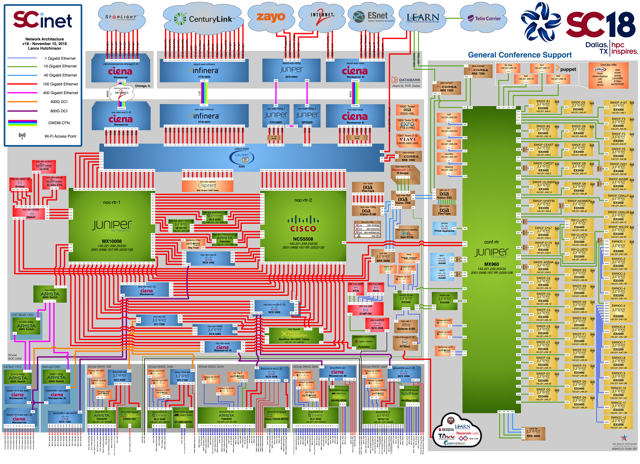| No more webcams due to the EU GDPR regulations! :-( |
|
|
|
|
|
|
|
|
|
|
Demo abstracts
| 1 |
Data Harbours; A compute infrastructure for data marketplaces.
Reginald Cushing, Tim van Zalingen, Joseph Hill, Paola Grosso, Cees de Laat, Lu Zhang, Leon Gommans, Rodney Wilson, Marc Lyonnais,Vijaay Doraiswamy, Purvish Purohit, Kaladhar Voruganti, Craig Waldrop, Sharing and computing on sensitive data is a challenge. Competing parties have many reasons to be cautious about their data yet there are situations where sharing data between competitors results in a win-win scenario whereby both parties gain an advantage. Under such strict conditions, a question that begs to be asked is, how can competing parties share sensitive data while still be in control? This prototype demonstrates such a scenario where competing parties own assets (data and compute) and allow processing under strict policies which define which compute can access which data and where can processing take place. See:
|
| 2 |
Building User Friendly Data Transfer Nodes.Joseph Hill.
Abstract: This demonstration will show how Data Transfer Nodes can be combined with existing applications to provide researchers a familiar interface with the enhanced performance of a DTN. FileSender and ownCloud have been modified to utilize a DTN to perform cross-domain transfers. This allows researchers to transfer files to peers across organizations and long distances at high speed without having to interact with a DTN directly.
|
| 3 |
Training AI/ML models using Digital Data Marketplaces.Leon Gommans, Anne Savelkoul, Wouter Kalfsbeek, Dirk van den Herik, David Langerveld, Erik IJzermans, Floris Freeman, Brend Dikkers,
Cees de Laat, Tom van Engers, Wouter Los, Paola Grosso, Joseph Hill, Reggie Cushing, Giovanni Sileno, Lu Zhang, Ameneh Deljoo,
Thomas Baeck, Willem Koeman, Laurie Strom, Axel Berg, Gerben van Malenstein, Kaladhar Voruganti, Rodney Wilson, Patricia Florissi
When using your own data, AI can solve problems. When sharing your data, AI can transform industries. This presentation discusses an approach called the Digital Data Marketplace, allowing consortia members to share their data with other members to achieve benefits with AI no single organization could achieve on its own. To allow Digital Data Markets to be created for many applications including Science, Smart Industry, Logistics, Health, Agriculture and more, we foresee the need to create Data Exchanges that offer common infrastructure capabilities. We will use an aircraft predictive maintenance use-case as an example, where an industry technology consortium could play a key role.
|
| 4 |
Dynamic infrastructure planning and provisioning for time critical applications in clouds.
Spiros Koulouzis, Paul Martin, Wang Junchao, Huan Zhou, Yang Hu, Zhiming Zhao.
The Dynamic Real-time Infrastructure Planner (DRIP) is a service suite for planning and provisioning networks of virtual machines and then deploying distributed applications across those networks, managing the virtual infrastructure during run-time based on certain time-critical constraints defined with the application workow. The DRIP service provides an engine for automating all these procedures by making use of pluggable microservices for providing specific functionalities orchestrated via a single manager component behind a RESTful Web API for easy use and retrieval of results. This approach enables a more holistic approach to the optimisation of resources and meeting application-level constraints such as deadlines or SLAs. It also allows application developers to seamlessly plan a customised virtual infrastructure based on constraints on QoS, time-critical constraints or constraints on budget. Based on such a plan DRIP can provision a virtual infrastructure across several cloud providers, and then be used for deploying application components, starting execution on demand, and managing the runtime application deployment state.
This video demonstrates the basic features of DRIP via several use cases.
|
|
|
|
|








